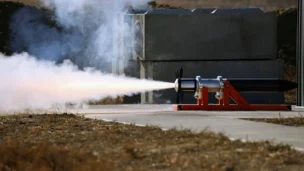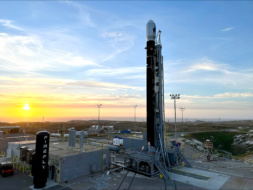What would it look like for the Defense Department to be able to lean on the commercial space community in times of need? That’s the question examined by a new report from the RAND Corporation released last week.
The paper, titled “A Framework for Building a Civil Reserve Space Program,” looks at how the Pentagon has built programs to activate commercial air and sea assets during conflicts, and lays out questions for how a similar partnership in the space domain might work.
Origin story: Space Operations Command asked RAND to research a potential civil reserve space program because the military was looking for new ways to collaborate with the growing commercial space sector, Yool Kim, director of the RAND Washington office and author of the paper, told Payload.
“The commercial space industry is expanding rapidly, and there was a lot of interest in how to better partner with the commercial sector,” she said. “This was one way…that DoD [thought] to strengthen the partnership with the commercial space industry.”
But a civil reserve space program offers more benefits than just an excuse to partner, Kim said. Being able to tag in commercial space assets gives the military additional resources to surge if needed, and boosts resilience if national security capabilities are taken offline during a conflict.
Open questions: The paper closely examines details of the Civil Reserve Air Fleet, or CRAF, and Voluntary Intermodal Sealift Agreement, or VISA, which allows US Transportation Command to task commercial air and sea operators under different scenarios. VISA has never been activated, but CRAF has been used three times, most recently in August 2021 during the evacuation from Afghanistan.
A civil reserve space program, however, would likely face some different challenges from the existing air and sea counterparts. Some of the questions raised by the RAND report include whether the space industry has enough extra capacity to be able to surge and support DoD if needed and how the military would protect commercial assets potentially placed in harm’s way.
Kim said any commercial agreements must be made on a sector-by-sector basis, since different parts of the industry are at different stages and maturity levels.
“If the Space Force or DoD were to set up this framework or create a contractual arrangement, they need to look at this from an individual market and individual company level, because each company also has a different risk posture,” she said. “It’s going to be difficult to try to treat them as one homogenous thing.”
Meanwhile: The Space Force is slowly pursuing plans for a Commercial Augmentation Space Reserve, or CASR. DoD asked companies for feedback on a framework document in July.




